Speeding down a winding road in the hills of northern Fauquier county a few days ago I saw a few native dogwoods blooming along the highway. The dogwoods in my garden are usually a week later than others in the neighborhood, and mine finished blooming two weeks ago, so I was delighted to see a few white blooms peeking out from the forest’s green.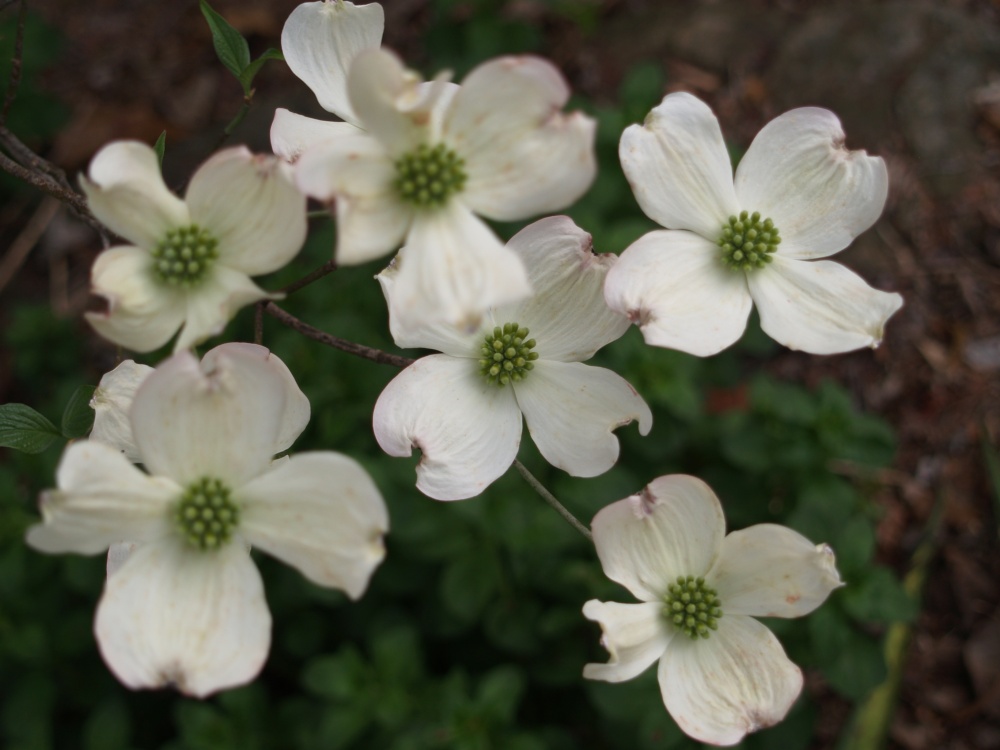
The native dogwoods (Cornus florida, above) are closely followed in bloom by hybrid dogwoods introduced by Rutgers University that are a cross between our native and late spring flowering Chinese dogwoods (Cornus kousa). While our native is susceptible to a variety of fungus and disease issues, the vigorous Rutgers’ hybrids and Chinese dogwoods are not bothered at all.
In my garden there are five native dogwoods, two hybrids, and a handful of Chinese dogwoods so that there are continuous dogwood blooms from mid April into June. Though the foliage of native dogwoods is often spotted and somewhat disfigured when rainfall is abundant and humidity is high, I have not experienced any more than cosmetic damage, and the trees have grown tall and full.
Ten years ago (though my recollection could be off by several years) I planted a white flowering hybrid ‘Aurora’ and pink ‘Stellar Pink’ (above). At the start both grew aggressively but flowered sparsely, and I was prepared to categorize the hybrids as failures. After a third spring there were more blooms, but ‘Aurora’ fell victim to a poorly chosen, overly damp location, and it steadily declined from late spring until the year’s end. It was removed when it failed to leaf out the following spring.
‘Stellar Pink’ continued to grow vigorously, and each year brought more abundant blooms. However, large maples and a native black gum from the forest’s edge began to encroach and shade the dogwood, so that I feared it would decline. To the contrary, ‘Stellar Pink’ grew through the arching maple branches so that there is an upper tier where flowers cover the tree’s canopy, and a lower tier where they are less dense.
The growth habit of ‘Stellar Pink’ is much faster and more upright than other dogwoods, but I find that the designation as pink in color is a bit of a misnomer since the flowers rarely exhibit more than a blush of pink on otherwise white blooms. In a few damp, cool springs the flowers have been more pink, but this spring has been both cool and wet, and the blooms show barely a trace of pink.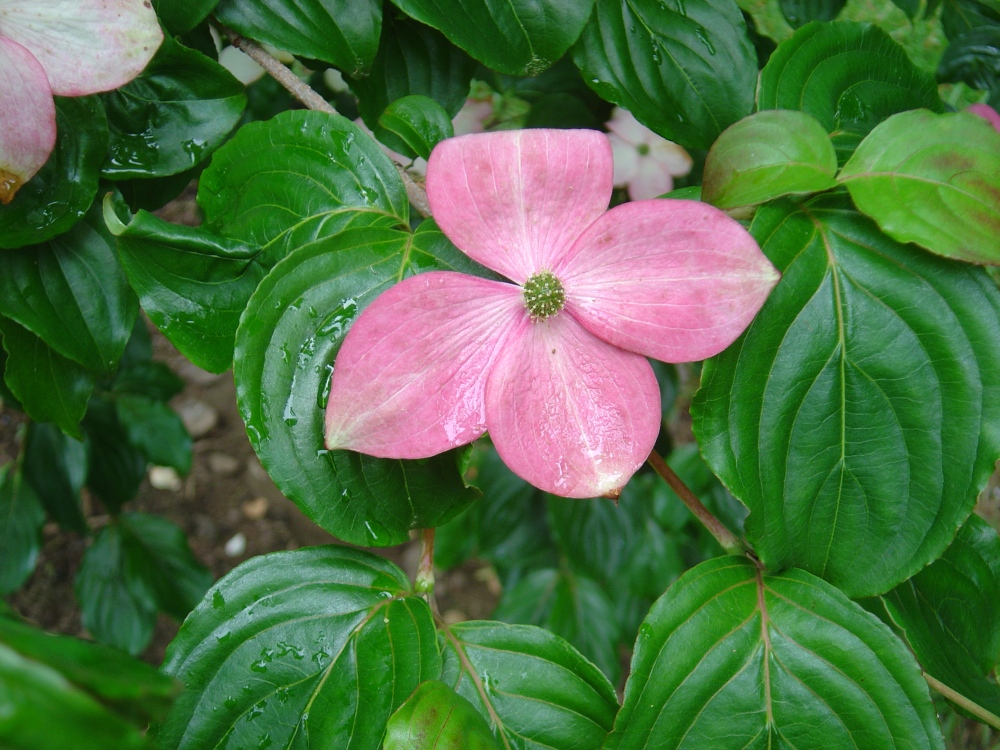
In travels to Oregon in early June I have seen ‘Stellar Pink’ and the pink flowering Chinese dogwood ‘ Satomi’ (Cornus kousa ‘Satomi’, above) with deep pink blooms, though the nurserymen say that the color is variable in their cool, low humidity climate also. Nevertheless, ‘Stellar Pink’ is a marvelous, nearly bullet proof tree where a large dogwood is desired.
A few years ago I was bouncing through a field of dogwoods in an old pickup truck accompanied by the grower, when I saw a dogwood with impossibly large white blooms on trees that were barely taller than knee high. The nursery owner identified these as ‘Venus’, and in the next row was ‘Starlite’, with flowers that were only slightly smaller. ‘Venus’ and ‘Starlite’ are hybrids including genetics from the tall growing Pacific dogwood (Cornus nuttali), which struggles in the humid conditions of the east coast, but the hybrids have shown considerable vigor and disease resistance. Of course, I immediately knew that I must find a place for ‘Venus’ in my garden.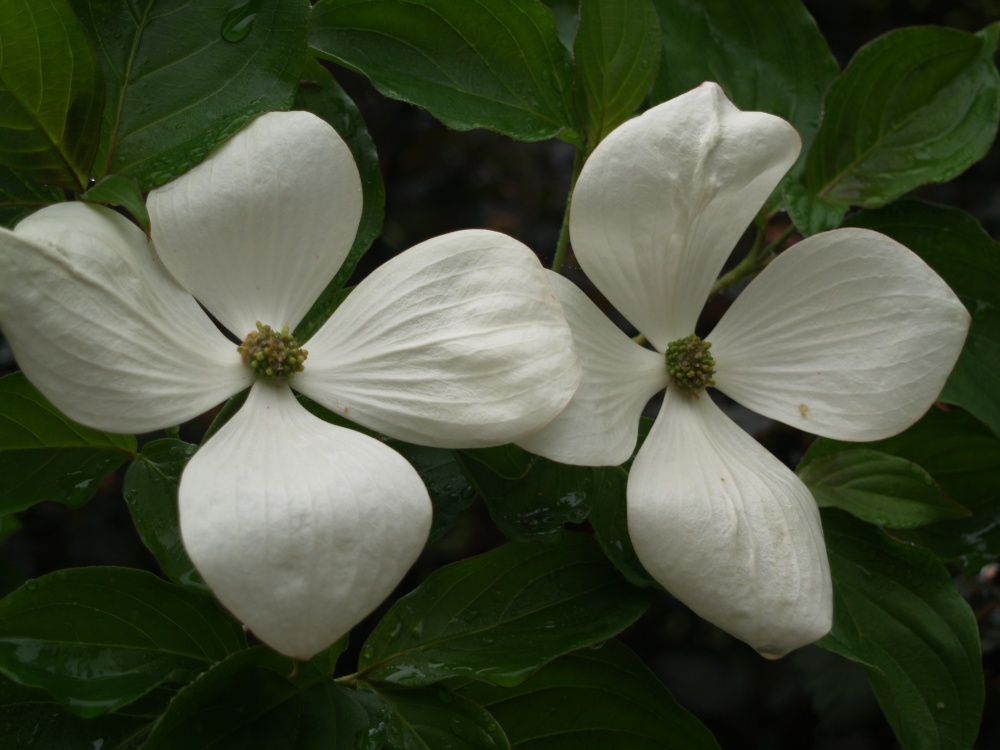
When a large cypress in the garden was toppled by heavy snow a year ago the opening was created, and so one ‘Venus’ (above) was planted in full sun, and another in the dry shade along the southern border. Today, both are in full bloom, though (as expected) the one in full sun has a third more flowers. The individual blooms are five inches across, at least half again as large as other dogwoods. I was only slightly concerned that the huge flowers would be out of scale, and perhaps a bit cartoonish, but now I don’t think so, and I only wish that I had planted them sooner.
With cooler than average temperatures I would expect that the Chinese dogwoods would flower a bit later than their normal late May, but they are only a few days from full bloom two weeks early. Very clearly, gardening in four decades I still do not fully understand the relationship between weather and bloom cycles, no matter how much I might jabber on about it. 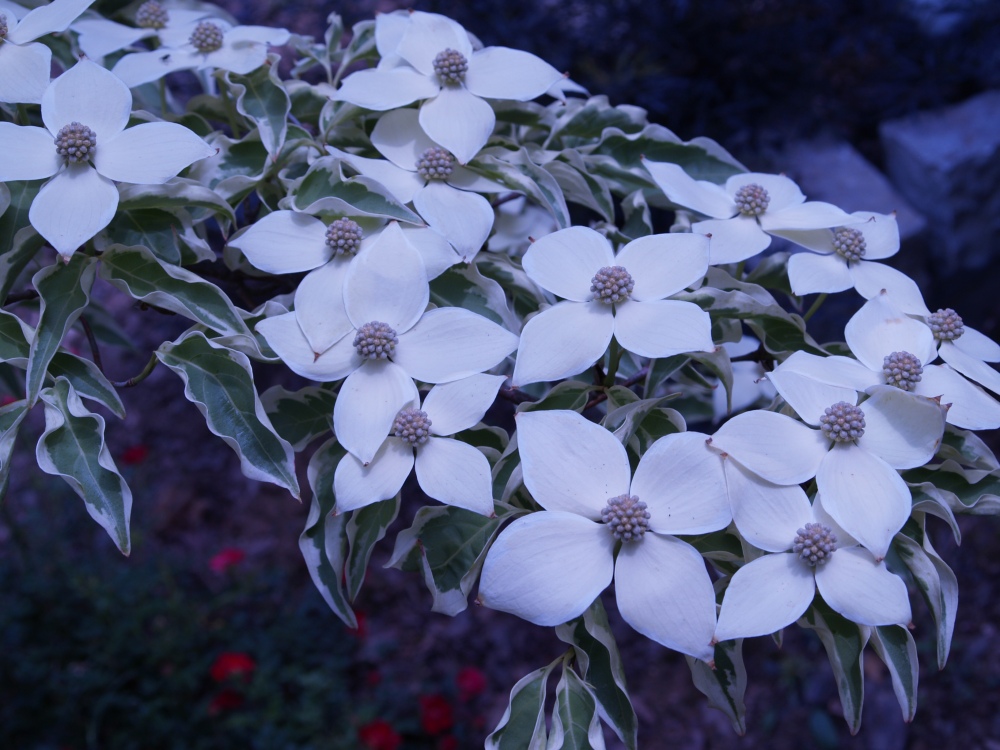
Again this year it does not appear that the green and white variegated leaf Chinese dogwood ‘Samaritan’ will bloom, and now I have forgotten if it has ever flowered. It is in perfect health otherwise, and I cannot explain the lack of blooms. Its foliage is outstanding and it is much more upright growing than ‘Wolf Eyes’ dogwood (Cornus kousa ‘Wolf Eyes’, above) which has similar foliage, but an almost shrub-like spreading habit.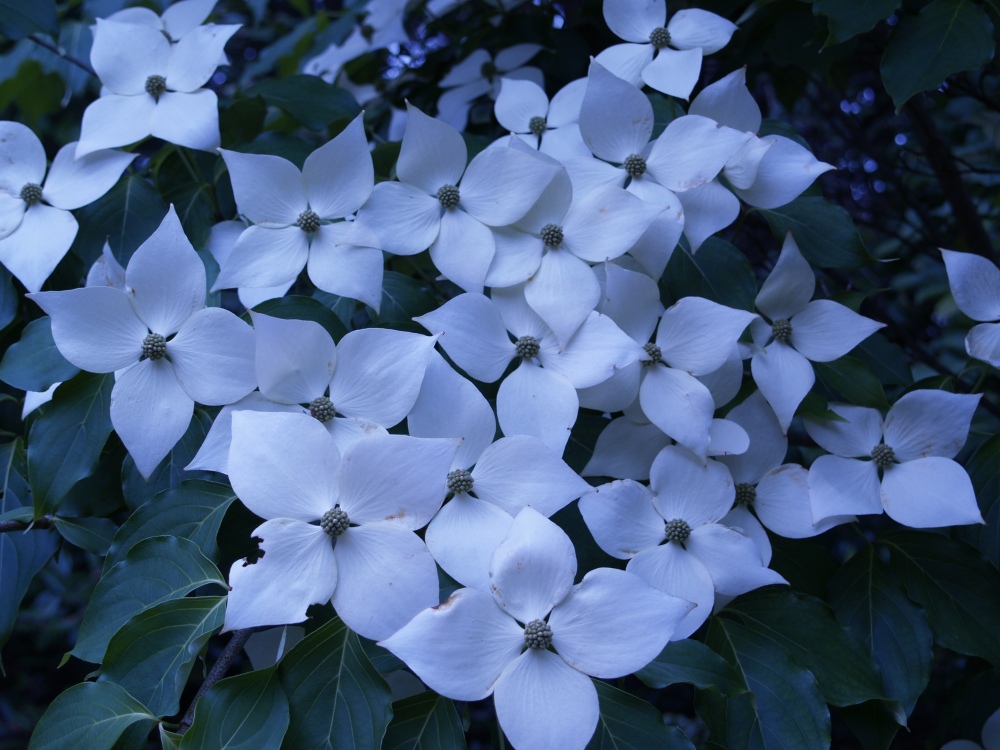
‘Wolf Eyes’ has barely grown taller than when it was planted (though I suspect it has snuck upwards a bit), but it has spread considerably, and it makes quite a show in bloom and after. I suppose there is still hope that ‘Samaritan’ will bloom, since the fast, upright growing green leafed ‘Galilean’ (Cornus kousa ‘Galiliean’ , above) bloomed sparsely for several years, but has flowered abundantly the past two years.
In a garden with spring blooming redbuds, magnolias, serviceberry, and fringetrees the dogwoods are my clear favorites, and if it were possible to find space for a few more I wouldn’t hesitate. I won’t wish for more snow damage so that other evergreens must be chopped down and removed, but ….
This is a great detailed description of dogwoods which have been successful for you! I plan to add one more dogwood to my garden really soon, and needed to get some ideas, and so now I’m gonna consider ‘Stellar Pink’ and ‘Venus’.